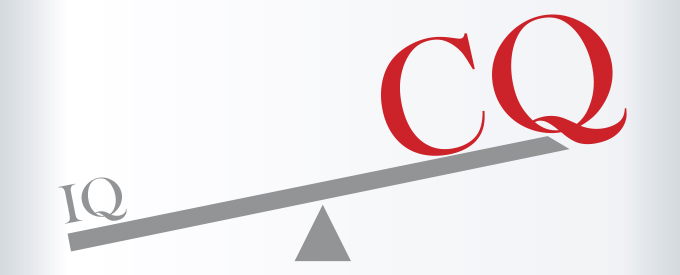Perhaps you, like many others, associate the word design with some kind of visual styling of a product, building, or printed material for the purpose of attracting clients and increasing sales. However, for the majority of modern managers and businessmen the concept of design has become a new way of thinking that allows them to handle a variety of intricate problems in a non-trivial way.
People in the US began regarding design as a way of thinking as far back as the late ‘70s.
Researchers took an interest in the manner in which architects and city planners solved creative tasks and how they tried to produce ideas that were not only creative, but also human-oriented.
It turned out that there is a short path from conventional design to design thinking, since both concepts aim to create a better future and to uncover new solutions.
Why has design managed to capture thousands of businessmen’s and managers’ hearts so quickly and so successfully?
The fact is that the analytical principles of work had often fallen short of expectations as they were unable to get businesses ahead of new challenges, and they frequently missed the real reasons behind each crisis.
Planning and strategic thinking had on many occasions played a nasty trick on major companies.
Design thinking, on the contrary, leans toward creativity and that artistic, partly chaotic process of generating ideas and solutions which goes on in the minds of designers, planners, and creative people in general.

What are the main principles of design thinking?
Tim Brown, the head of IDEO, the first and the most successful creative company in the world, described five basic methods of its usage in the book Change by Design: How Design Thinking Transforms Organizations and Inspires Innovation. They are as follows.
- Don’t ask what, ask why?
When you come across an obstacle, your knee-jerk reaction is to devote time and other resources to get to the bottom of the problem.
It would be better to concentrate on its causes.
At the same time you have to think outside of the box and avoid setting any limitations for yourself: have the nerve to figure out whether it is a real problem in the first place.
Are you digging in the right direction?
For instance, do we need a TV with some additional functions or improved entertainment content?
Or a beautiful hotel lobby, or a good night’s sleep?
Tim Brown knows that there is nothing worse than finding the correct answer to the wrong question.
- Open your eyes
This is the right start when the visual component could be of great help.
Observe the lives of people and look for the thing they really need instead of sitting in the office being confident that you are aware of your clients’ real needs.
Just come out of your comfort zone. “Look at an action or an object you’ve only looked at once (or never), as if you were a detective examining a crime scene.
Why are manhole covers round? Why does my teenager go to school dressed in a certain way?” advises Brown. After you learn how to look at things with the fresh curiosity of a child, you can come to real insight.
- Visualize
Have you opened your eyes? Now draw what you have seen. Tim Brown writes, “A picture is worth a thousand words.
Or maybe even more.” Even if you don’t consider yourself a talented artist, you still should put your ideas into sketches.
It will help you to have a three-dimensional view of the situation, to create a system and to understand its drawbacks.
- Develop the ideas of other people
A man may have an ingenious idea, but it may wither away without effective mutations.
Such mutations can occur only in a group of co-workers who are modifying, developing, and turning this idea upside down and inside out before achieving fabulous results.
Tim Brown points out, “Just as the natural environment requires ecological variety, a corporation needs a culture of competing ideas.
Jazz musicians and actors-improvisers have created a form of art out of their ability to develop stories which were created by other artists in a real-time environment.”
- Demand more options
Do not allow yourself to rest after one idea, even though it appears to be perfect. Maintain a constant search for other possibilities despite the annoyance of customers or loss of time.
A decent idea always has its pair. Tim Brown said, “Let a hundred flowers bloom, and then let them go through the process of cross-fertilization. Without studying a variety of options, you won’t ensure a sufficient diversity.”
Keep the change!
A case from the IDEO experience.
IDEO has developed a lot of projects and rendered assistance in solving a variety of tasks across the globe.
Large companies from the US have been among their clients, as well as major corporations from abroad that have improved the general state of economic well-being in whole regions and in entire countries.
In 2006, the Bank of America launched a new customer service called Keep the Change.
It offered the possibility depositing funds in a special savings account from the client’s credit card whenever the client made a payment.
If the customer bought a can of soda worth $1.50, the system would round up this amount to $2.00 and transfer 50 cents to the card holder’s new deposit account.
The new Keep the Change service attracted 2.5 million new clients and over $1 million in deposits in the first year of its operation.
It should to be noted that the initial task set before IDEO, which provided consultation services for the bank, was quite simple – attract as many clients as possible.
Design thinking not only helped to complete this order, but also allowed clients to start saving their spare change for a rainy day, instead of keeping it in a jar in the kitchen.
Moreover, this idea has formulated a whole new behavioral model within the banking sector, because it was unorthodox and creative.

It is necessary to introduce CQ instead of IQ.
Creative quotient is an alternative to IQ, and it should replace a popular ability assessment tool that has failed to prove its value.
Such a conclusion has been drawn by Bruce Nussbaum, the former deputy editor at Business Week and a professor of innovation and design at Parsons the New School of Design.
He reckons that we have entered an era of so-called creative intellect, which promises to replace designer thinking.
Every person thinks that he is creative, and it is true. However, not every person considers himself to be the designer of his own way of thinking.
According to Nussbaum, although design thinking has yielded a lot of positive results, oftentimes it has been applied in business as something systematic, clothed with book postulates and therefore inviolable.
This is the reason why many managers and executives, who want to be modern and creative while keeping control over events, became disenchanted with this approach.
That is why creative thinking, as the result of the actual practice of original thinking, has a strong chance of becoming the successor of design thinking, having absorbed all the best things from it.
If you are interested in this topic:
– Study the activities of IDEO and its cases.
– Get acquainted with the principles of work and the products of an educational company.
– Visit Tim Brown’s blog.
Photos: Shutterstock
Read more here.
How To Master The Use Of Twitter For Your Business Or Career
Support us!
All your donations will be used to pay the magazine’s journalists and to support the ongoing costs of maintaining the site.
Share this post
Interested in co-operating with us?
We are open to co-operation from writers and businesses alike. You can reach us on our email at [email protected]/[email protected] and we will get back to you as quick as we can.









